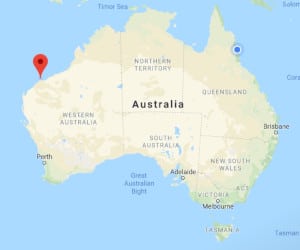Queenfish


Charles Kretzmann
Local Fishing Personality
Charles is a Karratha local and has fished the area on lure and fly for many years. He’s particularly accomplished when it comes to targeting larger pelagic speedsters, including Spanish mackerel from the shore.
Charles’ Top Tips For Karratha Queenfish
- Queenfish do most of their hunting in the upper half of the water column and 95% of the time should be targeted there. The species is aggressive and the strike and fight can be spectacular when they are feeding on the water surface.
- The prime places to look for queenies around the Karratha area are rocky (boulder strewn) points that shelve gently into deeper water and are exposed to strong tidal currents. They can also turn up over sandy substrates or reef at times. Water depths of 3 to 10m are the most productive.
- Overcast days with a little breeze give the best results, with periods of big tides providing the water flow that gets bait and queenfish most active. However, even neap tides in Broome give substantial water flow, making queenfish a viable target most days.
- A common mistake is to use larger poppers that attract the queenfish, but often result in fish shying away without striking. It’s better to switch to smaller lures (120mm or less) that work within the water film to entice more strikes. Using clear or less gaudy lures tend be more subtle and spook less fish, allowing anglers to “sell the splash” and take fish that are more timid.
- A stealthy approach works best. Motoring up-current of feeding fish and allowing the boat to drift back onto them with the engine turned off is a good strategy. Charles has a double layer of carpet on his boat to deaden accidental noises.
- Switching from treble hooks to fine wire in line singles will reduce damage to fish and make for more successful catch and release.
Tackle For Queenfish
- Charles prefers relatively long (8-9ft) rods, even when boat fishing. This allows for longer casting, which in turn reduces the chances of spooking feeding fish. He couples this with a 3000-4000 size reel loaded with 20-30 lb braid. To the end of the braid he ties a 4m length of 50lb braid, followed by 1.2m of 30-35lb nylon or monofilament leader. Finally he adds a short length of wire trace with a snap. The wire is not necessary for queenfish, but allows Charles to react quickly if a school of mackerel or other toothies bust up while he is targeting queenfish.
Lures For Karratha Queenfish
- The first lure Charles ties onto his line is a pencil popper or stickbait of around 120mm length and 40g weight. These lures sink like a stone, but can be worked briskly through the surface film with deadly results. Worked correctly, they will just break the surface every metre or so, in a lifelike representation of a baitfish.
- If fish are being shy, Charles switches to a homemade tin lure of about 60 mm length. To this he attaches a single fly hook dressed with white hair and a little tinsel, creating a tail around 80-90 mm total length. This is fished I much the same way as the larger stickbait, but is superior when the fish are not hitting the larger lure. A good alternative is a chrome or stainless steel 20-30g jig with the treble hook replaced with the fly hook and hair tail.
- The first two lures cover 95% of situations. If Charles is still struggling to get bites he’ll switch over to a small 100-120mm paddle tailed soft plastic lure on a jighead. He’ll normally try and fish this mid water and work it with plenty of rod action. A by-catch of other reef species such as coral trout, mackerel etc is not common when fishing this way.
